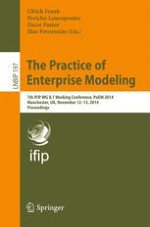This volume constitutes the proceedings of the 7th IFIP WG 8.1 Conference on the Practice of Enterprise Modeling held in November 2014 in Manchester, UK.
The focus of the PoEM conference series is on advances in the practice of enterprise modeling through a forum for sharing knowledge and experiences between the academic community and practitioners from industry and the public sector.
The 16 full and four short papers accepted were carefully reviewed and selected from 39 submissions. They reflect different topics of enterprise modeling including business process modeling, enterprise architecture, investigation of enterprise modeling methods, requirements engineering, and specific aspects of enterprise modeling.
